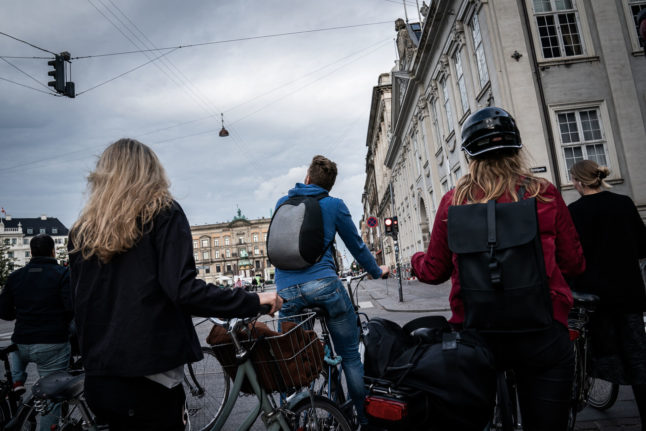There’s no denying that Denmark sees a lot of cold (and wet) weather, as heavy snowfall and the lowest November temperatures for decades have already demonstrated this winter.
Whether you’re planning a winter vacation or live in the Nordic country, knowing how to dress for the cold can help you stay comfortable, warm, and dry, no matter the weather.
We explore the fundamentals the essential Danish winter wardrobe and hacks that will get you through the cold with a smile on your face.
The (Scandinavian) religion of layering
One of the first rules for dressing for cold weather that you will pick up soon after moving or visiting any Scandinavian country is layering.
As Denmark’s winter weather can be somewhat unpredictable, having multiple layers also allows you to adjust your clothing as needed.
Generally, you should start with a moisture-wicking base layer to keep sweat away from your skin (the fabric “traps” the sweat). Building on that, try adding an insulating layer for warmth and finishing with a waterproof and windproof outer layer to protect against rain and cold winds.
This practical multi-layer system ensures you can quickly adapt to changing conditions, and should the temperature unexpectedly rise, you can easily remove the outer layer to adapt.
Picking the right fabrics
Ask a Dane for winter clothing advice and they will likely nudge you in the direction of wool, fleece, and thermal materials, as they provide insulation and have moisture-wicking properties, which help keep you warm and dry.
READ MORE: How to dress your child for the cold, wet Danish winter
Contrary to the advice you might receive in southern Europe, you’ll be advised to avoid cotton, as it retains moisture and can leave you feeling cold and damp in the Danish winter.

Set aside a budget for quality outerwear and accessories
With the winter weather being what it is – mostly cold and wet – investing in high-quality outwear that will keep you feeling comfortable for years to come is a good idea.
Start by getting a winter coat insulated with materials that we listed above, such as synthetic fill, to provide maximum warmth, and a rain jacket (Fjällräven, Helly Hansen, and McKinley are all solid choices when it comes to rain jacket brands).
Make sure that the coat is waterproof and windproof, as Denmark’s many coastal areas are prone to chilly, damp conditions.
READ MORE: Embrace hygge: How to survive Denmark’s long nights this winter
Insulated and waterproof pants are also a smart addition to your winter wardrobe. Look for options that can be worn over your regular pants, allowing you to stay warm and dry while cycling to work or school and during other outdoor activities.
A good pair of waterproof boots (Tretorn and Hunter rain boots are excellent choices) to keep your feet warm and dry should also be on your shopping list, as is the case with a warm hat, scarf, and gloves, which are especially beneficial on windy days.
Also, consider buying a backpack rain cover – it usually comes in handy multiple times a week in winter.
Get into thermal underwear
Thermal underwear can be a game-changer when it comes to dressing for cold weather. Thermal tops and bottoms make for a great base layer, providing an extra layer of warmth and insulation without adding bulk to your overall outfit.
Picking the right socks (and by right, we again mean moisture-wicking and warm) is also important. Merino wool is a favourite in the region for a good reason (despite being pricier), so if you can find Merino wool socks, know it’s worth the extra buck.
Adapt, improvise, overcome (the cold)
Denmark’s weather can change rapidly, so if you can, try to prepare for different scenarios (make it a habit to check the weather forecast regularly, especially if you have outdoor plans).
A good idea could be to carry an extra layer or a lightweight, packable jacket in your bag for unexpected weather shifts. You could also keep an umbrella in your bag so you’re ready for a weather twist.
READ ALSO: Essential rain gear for a rainy Danish winter (and spring, summer, autumn)
Stashing a spare pair of dry socks in your bag in case you need to swap them out during the day is also a measure you will regularly thank yourself for.
As long as you plan in advance, Denmark’s ever-changing weather can be less of a challenge and more of an opportunity for mini-adventure when you are prepared for different scenarios.
Whether you’re exploring the city streets of a Danish urban hub, strolling along the coastline with a friend, heading to work, or on a trip to enjoy the cosy atmosphere of a local cafe, you can do so with confidence, knowing you’re ready for whatever weather surprises come your way.



 Please whitelist us to continue reading.
Please whitelist us to continue reading.
Member comments